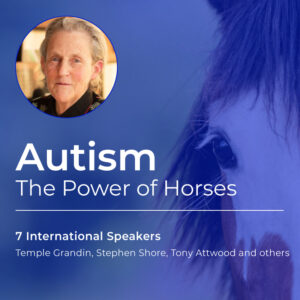Why do meltdowns occur?
Autistic people often have a different way of:
- sensing internal and external stimuli
- problem-solving
- learning and organizing information
- understanding and relating to others.
The daily challenges inherent in these differences can lead to the buildup of stress which can eventually be released as a meltdown.
To avoid and manage a meltdown, we need to determine:
- the causes and triggers for stress and mental and/or physical tension
- accommodations and modifications to the causes and triggers where possible
- the signs of an imminent meltdown at the early and middle stages
- best ways to support a person through a meltdown
- activities for the person to safely release tension and stress
- ways to facilitate emotional recovery for all those involved
The causes of a meltdown
The primary causes of a meltdown are stress from sensory sensitivity, cognitive overload, and aspects of social engagement.
Sensory sensitivity
One of the diagnostic characteristics of autism is hyper- or hypo-reactivity to sensory input. Clinical experience, autobiographies and research has confirmed that autism is associated with a different profile of exteroception and interoception. Exteroception is the perception of the external sensory world and interoception is the perception of the internal sensory world. We know that autistic individuals often have extreme sensitivity to external sensory experiences within the auditory, tactile, visual, and olfactory sensory systems. The sensitivity is much greater than with typical individuals, and sensory experiences that are often not noticed and easily accommodated by non-autistic people, are extremely intense and distressing, if not actually painful, for an autistic person. We are also recognizing that autistic people may have an extraordinary sensitivity to negative emotions in other people. This can be someone’s agitation, disappointment, and anxiety. Negative emotions can be acutely and accurately perceived and ‘infect’ the autistic person, becoming a contributary factor for increased stress and a potential trigger for a meltdown.
While an autistic person may have a sensory system that is overly sensitive to external sensory and emotional experiences, there can also be a lack of perception of their internal sensory world, that is, a difficulty with interoception. This can include not being aware of the internal signals of hunger or needing to go to the toilet, body temperature, injury or imminent vomiting. Difficulties with interoception in autism can include difficulty perceiving and being consciously aware of increasing stress, especially emotional distress. There can be a mind and body detachment, and the internal signals of impending meltdown may not be recognized. Non-autistic individuals can perceive low level indicators of physiological and psychological stress and can also easily communicate and moderate their internal emotional state. An autistic person, on the other hand, may have alexithymia, that is, a difficulty explaining thoughts and feelings in words to communicate to someone that they are reaching breaking point. Eventually the level of distress is so intense that it is recognized, but at an intensity that is too great to be effectively controlled by the autistic person, or by those trying to moderate the degree of distress.
Cognitive Overload
Autism is associated with a distinct profile of cognitive abilities that can contribute to increasing stress and frustration, leading to agitation and a meltdown. The cognitive profile includes less mental flexibility, or a ‘one track mind’. This means not knowing what else to do to solve a problem, quickly becoming frustrated and ‘hitting the panic button’. There can also be a difficulty mentally adjusting to change and transitions especially to a novel situation without a ‘script’ of what will happen, how to behave or what to do and say. Another cognitive cause of overload is having to cope with unclear instructions or expectations, and a need for prolonged processing time for information. This leads to a difficulty working at speed and coping with time pressure. Another cognitive characteristic of autism is stress from having to choose from multiple options, with a fear of making a mistake and being judged. There is also the potential of increasing stress due to ruminations over past slights, injustice, social rejection and bullying.
Social engagement
A core aspect of autism is a difficulty understanding people. Stress can be due to simply being with too many people, especially in crowded situations such as a shopping centre, station, or playground. There can be stress due to being in the presence of people who are not perceived as ‘autism friendly’. There is also stress from people making broken promises, such as saying, “I’ll be back in two minutes” and then not returning for four minutes and thirty seconds.
In social situations, there is an expectation that people are able to read facial expressions, tone of voice, gestures and social cues, while an autistic person may be able to intellectually process and ‘read’ this social information, it is exhausting for them. There is the potential to be confused by mixed messages, as in sarcasm, and determining the more subtle thoughts and intentions of others. There will be limited capacity for the duration of social engagement, and once that capacity has been reached, there is a risk of further social experiences being intolerable, which could contribute to a meltdown.
Social situations can also be associated with many aversive sensory experiences, such as being accidentally touched, the noise of shouting or applause, and the smell of perfumes and deodorants.
Signs of an imminent meltdown
Each autistic person will have a signature pattern of thoughts, behaviors and actions that indicate an imminent meltdown. The early warning signs may include knowledge that the person has probably come to the end of their ability to tolerate aspects of their sensory, cognitive, and social experiences. Signs of a more imminent meltdown can be a determination to escape the situation, engage in certain routines and rituals that serve to reduce anxiety and agitation, and avidly seeking access to a special interest as a thought blocker and energy restorative. Other signs can be increasing the volume of speech, and the use of obscenities, agitated gestures, refusing help or needing excessive reassurance. Talking about a specific topic or past injustice, or fragmented and incoherent thoughts and speech can also be signs of the level of agitation that precedes a meltdown.
Due to problems with interoception and alexithymia there may be few, if any warning signs perceived by the autistic person themselves or observed by others. A series of events may increase stress levels, lowering the threshold for a meltdown, and it may be one superficially trivial event that becomes the breaking point for the release of a build-up of stress over many hours or days.
A meltdown will be heralded by an increasing heart rate; a sports watch can be used to measure a person’s heart rate to indicate a meltdown is imminent. Another early warning system can be an Autism Assistance Dog or even the family dog. Animals may be able to perceive that a meltdown is about to happen sometime before the autistic person and their family members. The dog may seek the autistic person’s attention and become a distraction or engage in behaviour known to sooth the autistic person, thus reducing the likelihood of a meltdown.
How to manage a meltdown
There are two types of meltdown: one is outwardly directed, an explosion of emotional energy that is destructive, with feelings of rage and actions of destruction; the other is an implosion, with energy that is inwardly directed and expressed as intense despair, self-harm and suicidal thoughts. There is a potential third meltdown, or ‘shut down’. This is behaviour that acts as a means of self-protection. The person is physically immobilized, or ‘frozen’, and may even fall asleep as a means of ‘switching off.’
A meltdown is a psychological crisis, and there are recommendations regarding what to do and what not to do when a meltdown occurs. The following suggestions can help to minimize the depth and duration of a meltdown. The following suggestions are strategies to use in an outwardly directed explosion, or rage attack.
What to do in a meltdown
- One person should take control of the situation.
- The support person must remain calm, reassuring, and confident.
- Affirm and validate the depth of emotion and explain that the feeling will eventually go.
- Use calm, slow body language.
- Use minimal speech.
- Try to minimize eye contact for both of you.
- If possible, be alongside the person rather than facing each other.
- Keep other people away or encourage the person to take a position where other people are not visible to them.
- Suggest a calming or distracting activity, such as an iPad, looking at information related to a special interest; or a mesmerizing activity, such as spinning and twiddling toys.
- Accept restless behaviour, as this is a constructive means of discharging the energy inherent in a meltdown.
- Praise compliance and calmness.
- Suggest something to look forward to, or an enjoyable memory.
- Suggest going to a quiet retreat area or separate room, or perhaps go outside in nature if possible.
- An alternative option is to engage in a physical activity that constructively releases emotional energy, such as star jumps or press ups, or crushing items from the recycling bin.
- Remember the meltdown can have a constructive function in releasing compressed stress and re-setting the emotion regulation system.
- Wait patiently until the emotional storm has passed.
What not to do in a meltdown
Try not to:
- Talk about punishment, consequences, damage, and cost.
- Use reason when the person is too emotional to be reasonable.
- Interrogate, that is ask for an explanation as to why the person is so agitated or distressed.
- Encroach on personal space.
- Turn the situation into a lesson.
- Make sudden movements.
- Correct agitated behaviours.
- Match the person’s mood with your speech.
- Criticise the person for being overly dramatic or selfish.
- Use physical restraint.
- Make critical, demeaning, or patronizing comments.
Facilitating emotional recovery
Eventually, the despair and agitation will subside. The autistic person may subsequently experience remorse or embarrassment and engage in self-criticism. In extreme cases, the person may have no memory of what happened, being confused and in a state of denial when a ‘post-mortem’ is conducted on their behaviour.
It will help to suggest a practical way of restitution and repairing feelings, for example, by asking the autistic person to clear up any mess or complete a household chore as a means of recompense.
When calm, the person may be able to give a coherent and logical description of why the meltdown occurred, preferably without fear of incrimination or increased consequences, which would inhibit an objective evaluation. There may need to be penalties that are mutually agreeable, and a focus on appropriate rewards for self-control in future situations when a meltdown may occur. It will also be important for everyone to learn from the experience, and to draw up a plan for preventing and managing a future meltdown. The plan will include more effective ways of perceiving, communicating, and expressing stress in the future.
The support person will also need to emotionally ‘debrief’ and express their thoughts and feelings in a non-judgemental conversation with someone who can express compassion. The conversation needs to focus on how well they managed the situation, and any new information that has been discovered that may reduce the frequency and intensity of meltdowns.
Recommended reading: From Anxiety to Meltdown (2011) by Deborah Lipsky, London, Jessica Kingsley Publishers.
-
- Sale!
- General, Live Webcast, Online Course
Autism and Horses: The Powerful Impact of Equine Interaction for Autistic People
-
$66.00Original price was: $66.00.$0.00Current price is: $0.00. - Add to cart







